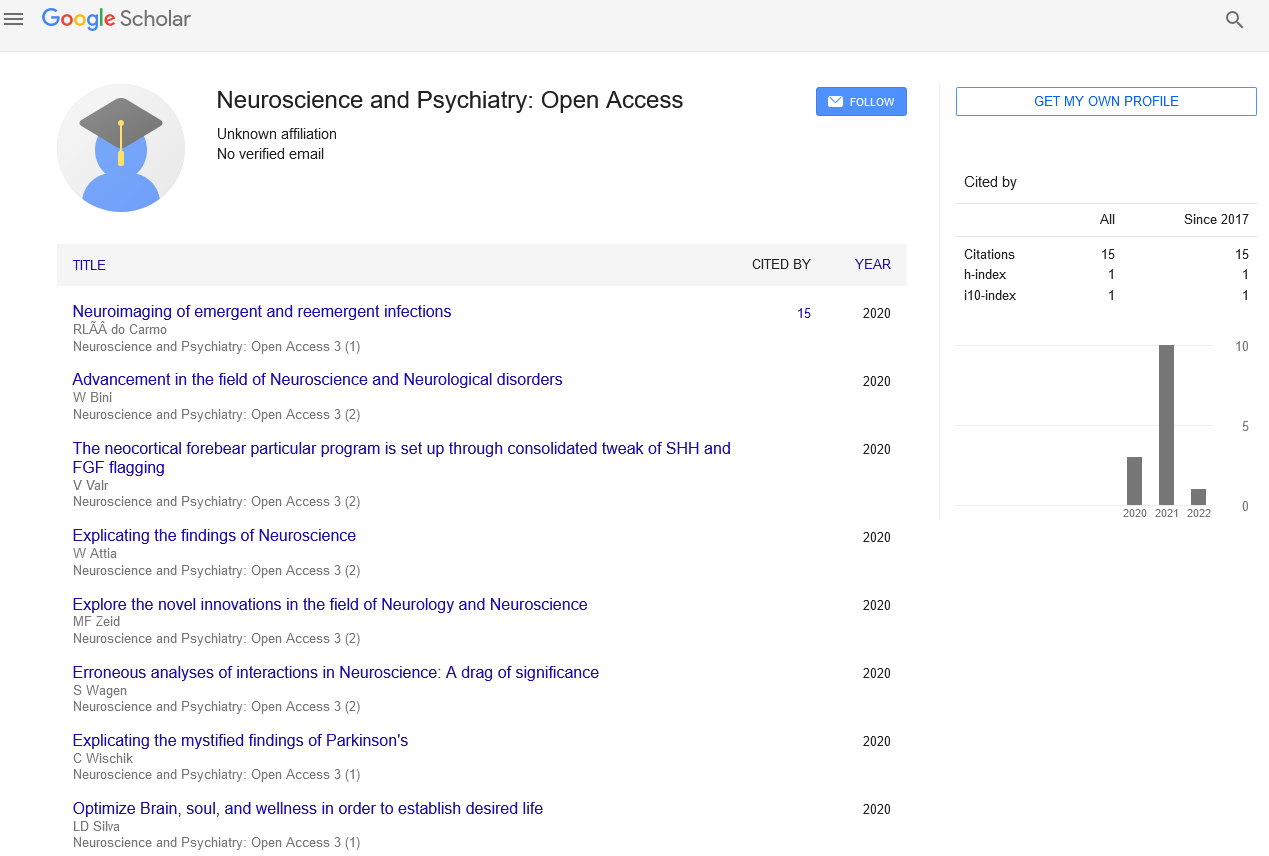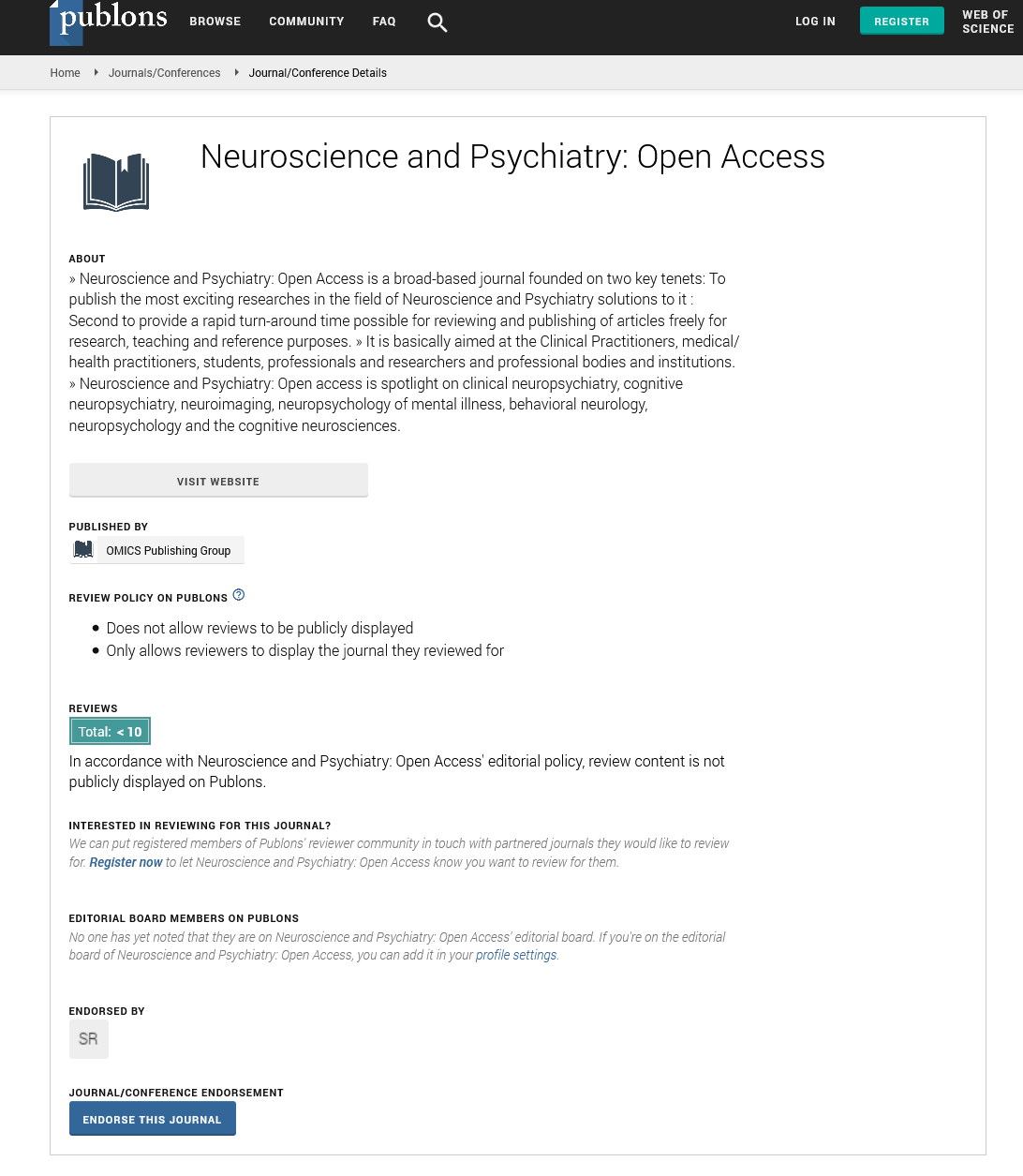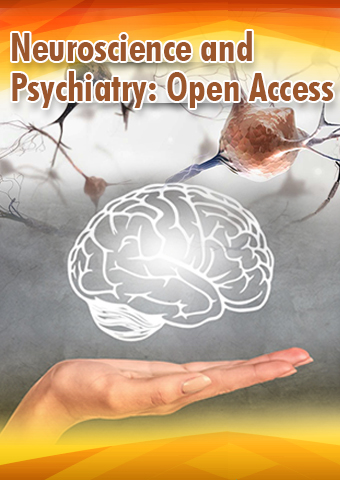Editorial - Neuroscience and Psychiatry: Open Access (2023) Volume 6, Issue 4
The Intricacies of the Nervous System: Unraveling the Threads of Connectivity
Yan Bobjer*
Experienced lab and field biologist, Department of Neuroscience, Australia
Experienced lab and field biologist, Department of Neuroscience, Australia
E-mail: yanb@gmail.co.in
Received: 01-08-2023, Manuscript No. npoa-23-110008; Editor assigned: 04-08-2023, Pre QC No. npoa-23- 110008; Reviewed: 18-08-2023, QC No. npoa-23-110008; Revised: 25-08-2023, Manuscript No. npoa-23- 110008 (R); Published: 31-08-2023, DOI: 10.37532/npoa.2023.6(4).104-106
Abstract
The human nervous system is a sophisticated and extraordinary network that orchestrates physical functions, cognitive activities, and emotional experiences. This article dives into the nervous system's complicated design, which includes the brain, spinal cord, and peripheral nerves. The structural components of the nervous system are investigated, including the brain's cognitive powerhouse and the spinal cord's critical role as a communication conduit. Furthermore, the peripheral nervous system's twin branches somatic and autonomic extend connections throughout the body, allowing for voluntary movement as well as involuntary important processes. The article discusses the importance of neural communication via synapses and neurotransmitters, as well as how chemical messengers carry signals between neurons. The amazing adaptability and capability for reorganisation of the system, known as neuroplasticity, is examined in the context of learning, damage recovery, and cognitive growth. This investigation reveals that the nerve system's intricate connection and dynamic adaptation provide the core of human existence, from simple reflexes to advanced cognitive activities. The promise for developing neurological and psychiatric treatments grows as research continues to solve its secrets, promising a fuller grasp of both the biological and psychological components of human life.
Keywords
Nervous system • Connectivity • Brain • Spinal cord • Peripheral nerves • Neurons • Synapses • Neurotransmitters • Structural components • Somatic nervous system • Autonomic nervous system • Neuronal communication • Neuroplasticity • Adaptability
Introduction
The nervous system is an incredible network that serves as the ultimate conductor of life's symphony in the human body, an intricate tapestry of cells, organs, and systems [1]. The nervous system, with its complicated web of connections and communication pathways, is a tribute to the intricacy and marvel of biological construction [2]. This sophisticated system, which orchestrates a ballet of electrical impulses, chemical messengers, and structural marvels, is at the centre of our every action, sensation, and thinking [3]. The nervous system is a wonder of complexity and coordination inside the delicate tapestry of the human body. It functions as the ultimate communication centre, conveying messages, directing activities, and forming thoughts like a vast network of interconnected roads [4]. The nervous system is the conductor of this symphony of life, from the most fundamental reaction to the most complicated cognitive process [5]. This article takes you on a journey through the nervous system's labyrinthine hallways, delving into its core components and the beautiful dance of connections that determine its functionality [6]. We'll look at the brain's colossal citadel, the spinal cord's information superhighway, and the numerous routes that run throughout our bodies. Furthermore, we will reveal the microscopic marvels of synapses and neurotransmitters, the messengers that bridge the gaps between neurons and enable communication on a grand and profound scale [7]. We discover not just the mechanics of bodily control, but also the nuances of emotion, perception, and cognition as we travel through this terrain of neurons and electrical impulses [8]. The complexities of the nervous system serve as the foundation for our experiences, providing a glimpse into the fascinating interplay between biology and the human experience. This investigation into the labyrinthine design of the nervous system is an invitation to unravel the riddles that have enthralled scientists, philosophers, and thinkers for ages [9]. It is an expedition through the neurological connections that connect, define, and steer us, exposing the incredible beauty and complexity of the human body and mind in the process [10]. The nervous system stands as one of the most remarkable and complex systems in the human body. It serves as the master controller, orchestrating every action, sensation, and thought. Comprising the brain, spinal cord, and peripheral nerves, the nervous system is a web of intricately connected cells that enable communication and coordination within the body.
Structural components the brain and spinal cord: At the core of the nervous system lies the brain and spinal cord. The brain, encased within the skull, is the epicenter of cognition, emotion, and consciousness. It is composed of billions of neurons, the fundamental building blocks of the nervous system. These neurons transmit electrical and chemical signals, facilitating communication between different regions of the brain. The spinal cord, extending from the base of the brain down the vertebral column, serves as a conduit for information between the brain and the rest of the body. It plays a pivotal role in reflexes, transmitting sensory signals to the brain and motor signals from the brain to various muscles and glands. Protected by the vertebrae, the spinal cord acts as a crucial link in the nervous system's overall functioning.
Peripheral nervous system extending connections: The peripheral nervous system (PNS) branches out from the brain and spinal cord to many regions of the body. The PNS, which is divided into the somatic and autonomic nervous systems, is in charge of transferring signals to and from the central nervous system. The somatic nerve system regulates voluntary movements and sends sensory data to the brain. It's what lets you to move your muscles consciously and feel sensations like touch, temperature, and pain. The autonomic nervous system, on the other hand, acts involuntarily and controls vital biological functions such as heartbeat, digestion, and breathing. This system is divided into sympathetic and parasympathetic branches, which operate together to maintain a delicate balance known as the fight-or-flight and rest-and-digest responses.
Neuronal communication synapses and neurotransmitters: The amazing capability of the nervous system originates from its capacity to send information across microscopic gaps called synapses. Neurons do not physically interact with one another; instead, they communicate through chemical messengers known as neurotransmitters. When an electrical impulse (action potential) reaches the end of a neuron's axon, it causes neurotransmitters to be released into the synapse. These neurotransmitters then bind to receptors on the dendrites of the neighbouring neuron, passing the signal onward. Every action, feeling, and idea in the human experience is supported by this process of neural communication. Neurotransmitters influence mood, behaviour, memory, and a variety of other cognitive functions.
Conclusion
The nervous system emerges as a protagonist of exceptional complexity and significance in the compelling story of human biology. Our investigation into its intricate web of connections, from the brain's grandeur to the tiniest whispers of synapses, has revealed the astonishing orchestration that underpins every aspect of our being. The nervous system's influence is woven smoothly into the fabric of life, from the most instinctive reflexes to the loftiest realms of cognition and emotion. The voyage through the landscape of the nervous system has revealed its versatility and plasticity, allowing us to recover from traumas, acquire knowledge, and shape our identities. As we approach new scientific discoveries, the potential for harnessing this plasticity for therapeutic interventions in the neurological and psychiatric worlds becomes clearer than ever. In essence, studying the nervous system is an investigation into understanding not only biology but also the essence of mankind itself. Each synapse, neuron, and thoughtforming impulse has a piece of the intricate story that characterises us. The depths of human potential and comprehension appear limitless as the threads of connectivity inside this wonderful system continue to be unravelled. Finally, the nervous system's intricate symphony resonates with the symphony of existence, reminding us that we are both watchers and participants in this amazing adventure. We are driven by the pursuit of knowledge and the desire to establish a deeper connection between the mysteries of the brain and the magnificence of human experience as we continue to investigate its complexity.
References
- Carrillo JE, Carrillo VA, Perez HR et al. Defining and targeting health care access barriers. J Health Care Poor Underserved. 22,562-75 (2011).
- Peng J, Luo F, Ruan G et al. Hypertriglyceridemia and atherosclerosis. Lipids Health Dis. 16, 233 (2017).
- Fagugli P, Patera F, Battistoni S et al. Six-year single-center survey on AKI requiring renal replacement therapy: epidemiology and health care organization aspects. J Nephrol. 28, 339-349 (2015).
- Yokota LG, Sampaio BM, Rocha E et al. Acute kidney injury in elderly intensive care patients from a developing country: clinical features and outcome. Int J Nephrol Renovasc Dis. 10, 27-33 (2017).
- Thorn, Caroline F Doxorubicin Pathways: Pharmacodynamics and Adverse Effects. Pharmacogenet Genomics. 21, 440-446 (2011).
- Brunelli D, Polonelli T, Benini L. Ultra-low energy pest detection for smart agriculture. IEEE Sens J. 1-4 (2020).
- Jackson, Peter. The multiple ontologies of freshness in the UK and Portuguese agriâfood sectors. Trans Inst Br Geogr. 44, 79-93 (2019).
- Imrie, Rob. Industrial change and local economic fragmentation: The case of Stoke-on-Trent. Geoforum. 22, 433-453 (1991).
- Maglaveras N, Stamkopoulos T, Diamantaras K et al. ECG pattern recognition and classification using non-linear transformations and neural networks: a review. Int J Med Inform. 52,191–208 (1998).
- Bick David, Bick Sarah L, Dimmock David P et al. An online compendium of treatable genetic disorders. American Journal of Medical Genetics. Part C Seminars in Medical Genetics. 187, 48-54 (2021).
Indexed at, Google Scholar, Crossref
Google Scholar, Crossref, Indexed at
Google Scholar, Crossref, Indexed at
Google Scholar, Crossref, Indexed at
Indexed at, Google Scholar, Crossref
Indexed at, Google Scholar, Crossref
Indexed at, Google Scholar, Crossref
Indexed at, Google Scholar, Crossref


